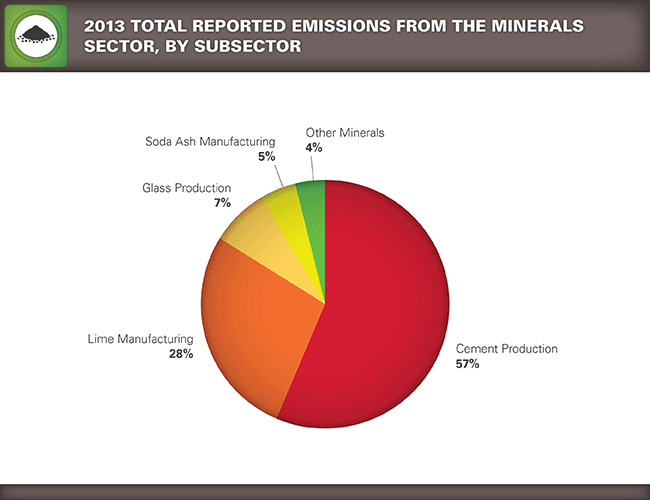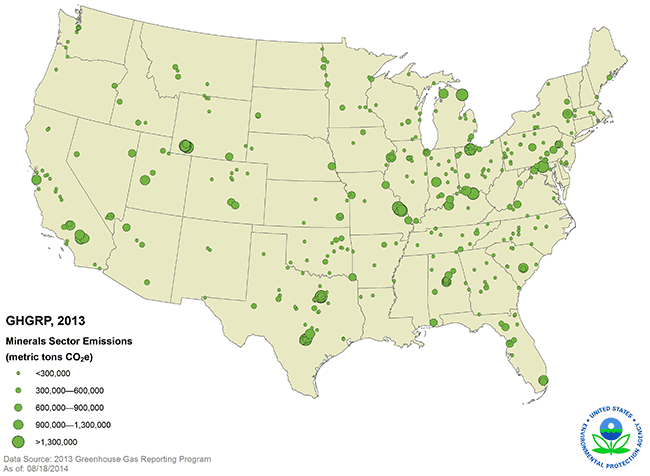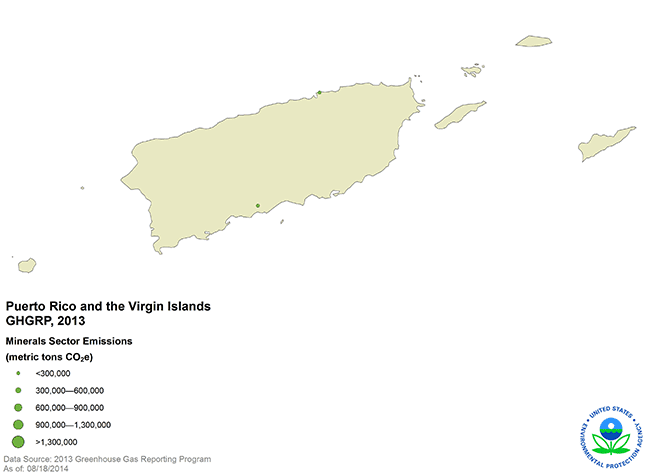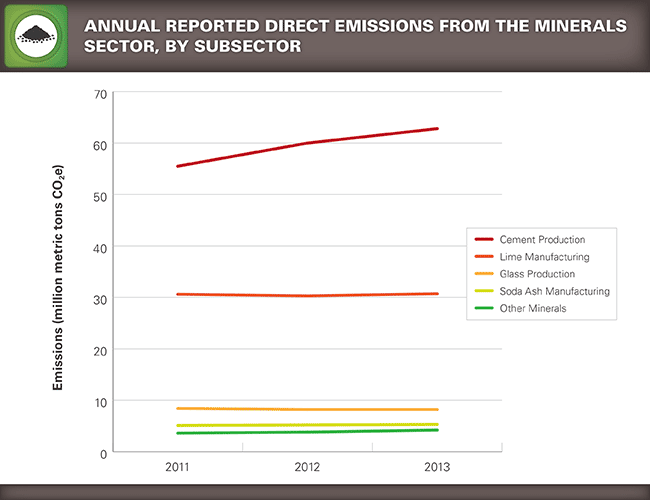GHGRP 2013: Minerals
 The minerals sector consists of cement production, glass manufacturing, lime production, soda ash production, and any other mineral production facility operating under NAICS codes beginning with 327 (Non-metallic Mineral Product Manufacturing). Facilities under this sector transform mined or quarried non-metallic minerals — such as sand, gravel, stone, clay, and refractory materials — into products for intermediate or final consumption. Glass, cement, soda ash and lime facilities report both process emissions from the calcination of carbonate-based raw materials and GHG emissions from stationary fuel combustion sources. All other mineral production facilities report only GHG emissions from stationary fuel combustion sources. A small number of facilities in this sector collect CO2 either for use in their other production processes (e.g., sugar refining), to transfer to other users, or to sequester or otherwise inject underground. This sector includes the CO2 emissions reported for those processes.
The minerals sector consists of cement production, glass manufacturing, lime production, soda ash production, and any other mineral production facility operating under NAICS codes beginning with 327 (Non-metallic Mineral Product Manufacturing). Facilities under this sector transform mined or quarried non-metallic minerals — such as sand, gravel, stone, clay, and refractory materials — into products for intermediate or final consumption. Glass, cement, soda ash and lime facilities report both process emissions from the calcination of carbonate-based raw materials and GHG emissions from stationary fuel combustion sources. All other mineral production facilities report only GHG emissions from stationary fuel combustion sources. A small number of facilities in this sector collect CO2 either for use in their other production processes (e.g., sugar refining), to transfer to other users, or to sequester or otherwise inject underground. This sector includes the CO2 emissions reported for those processes.
- 2013 Total Reported Direct Emissions from Minerals, by Subsector (as of 8/18/14).
Sum of percentages may not equal 100% due to independent rounding.

- Location and emissions range for each reporting facility in the minerals sector (as of 8/18/14).
This map shows the locations of direct-emitting facilities. The size of a circle corresponds to the quantity of emissions reported by that facility.


| Minerals Sector — Greenhouse Gas Emissions Reported to the GHGRP (all emissions values presented in million metric tons CO2e) |
|||
| 2011 | 2012 | 2013 | |
|---|---|---|---|
| Number of facilities: | 366 | 368 | 376 |
| Total emissions (CO2e): | 103.2 | 107.5 | 111.3 |
| Emissions by greenhouse gas (CO2e)
|
102.9 0.1 0.2 |
107.2 0.1 0.2 |
111.0 0.1 0.2 |
CO2 emissions from the combustion of biomass are NOT included in emissions totals provided above.
| Number of reporters and 2013 emissions (CO2e) per waste industry subsector | ||
| Industry Sector | 2013 Number of Reporters | 2013 Emissions (million metric tons CO2e per year) |
|---|---|---|
| Cement Production | 96 | 62.6 |
|
Lime Production |
75 | 30.6 |
|
Glass Production |
109 | 8.2 |
| Soda Ash Manufacturing | 4 | 5.3 |
| Other Minerals | 94 | 4.2 |

